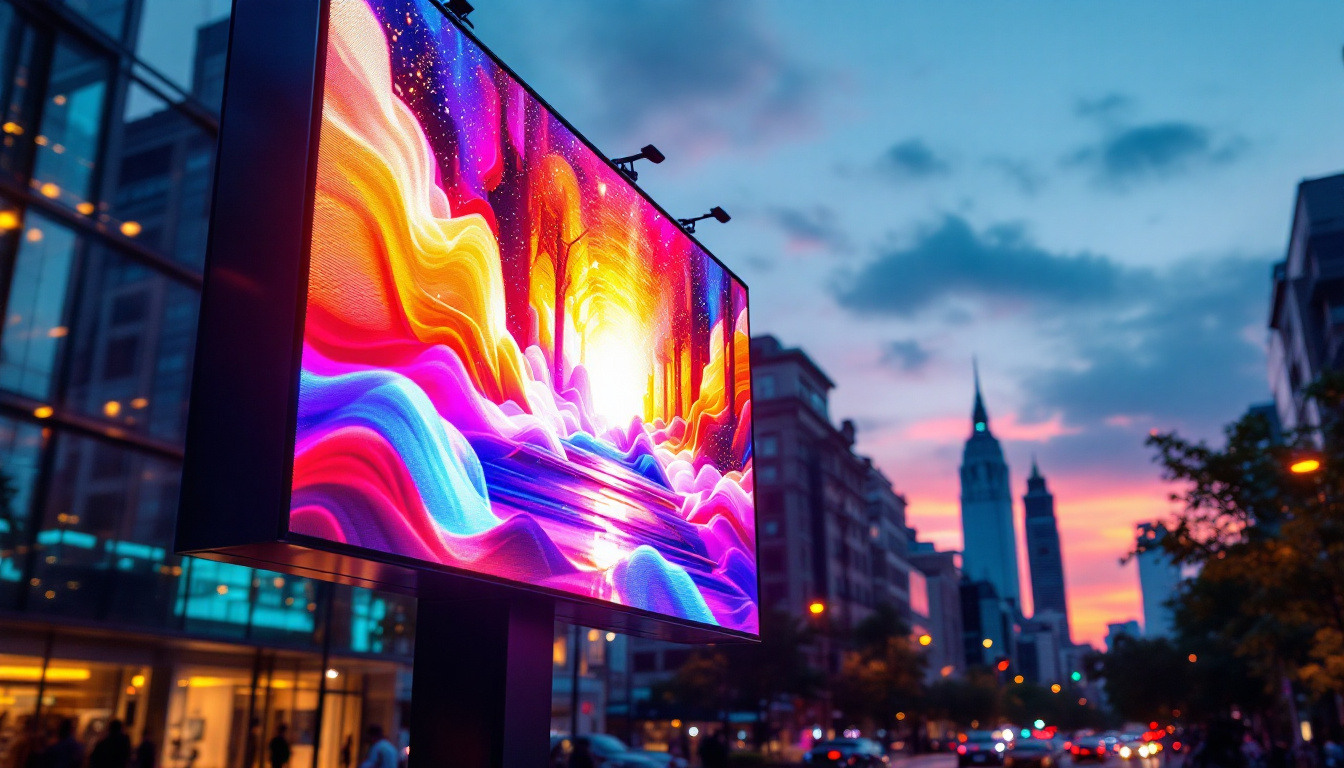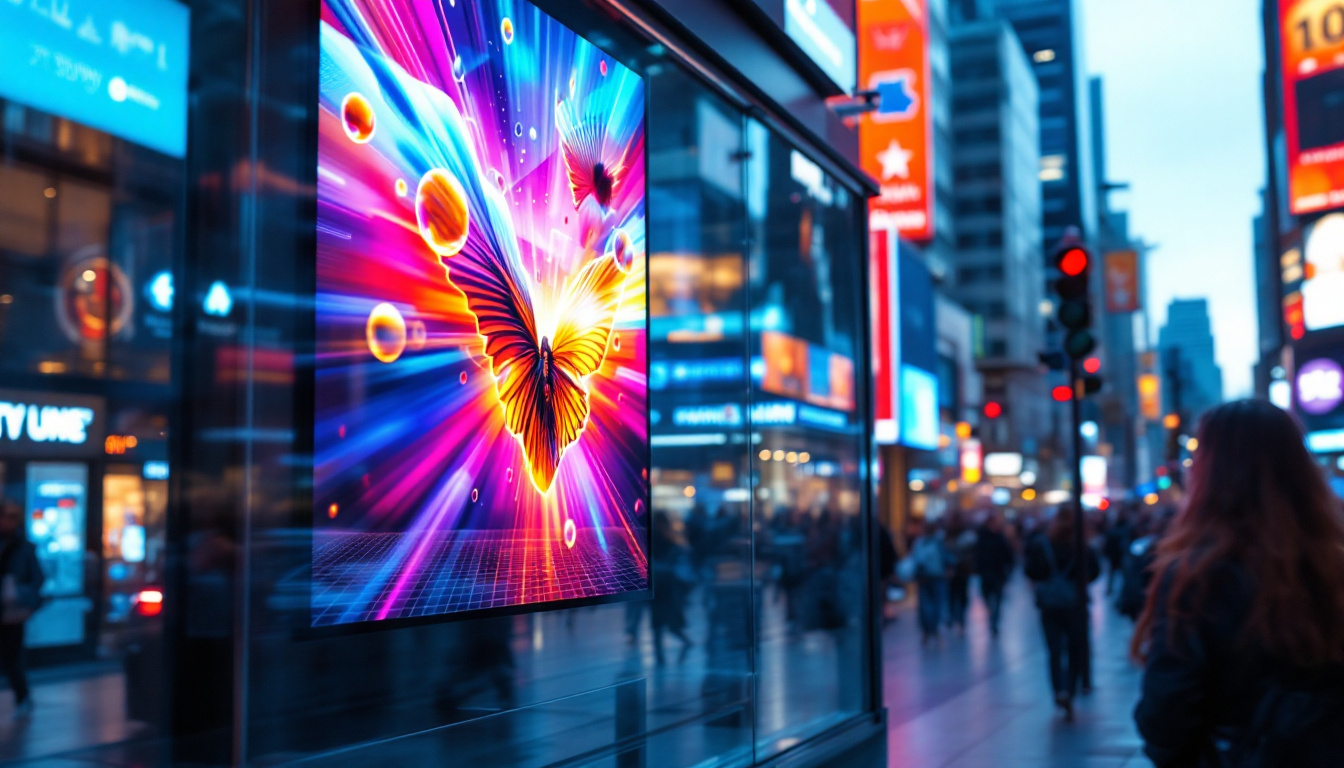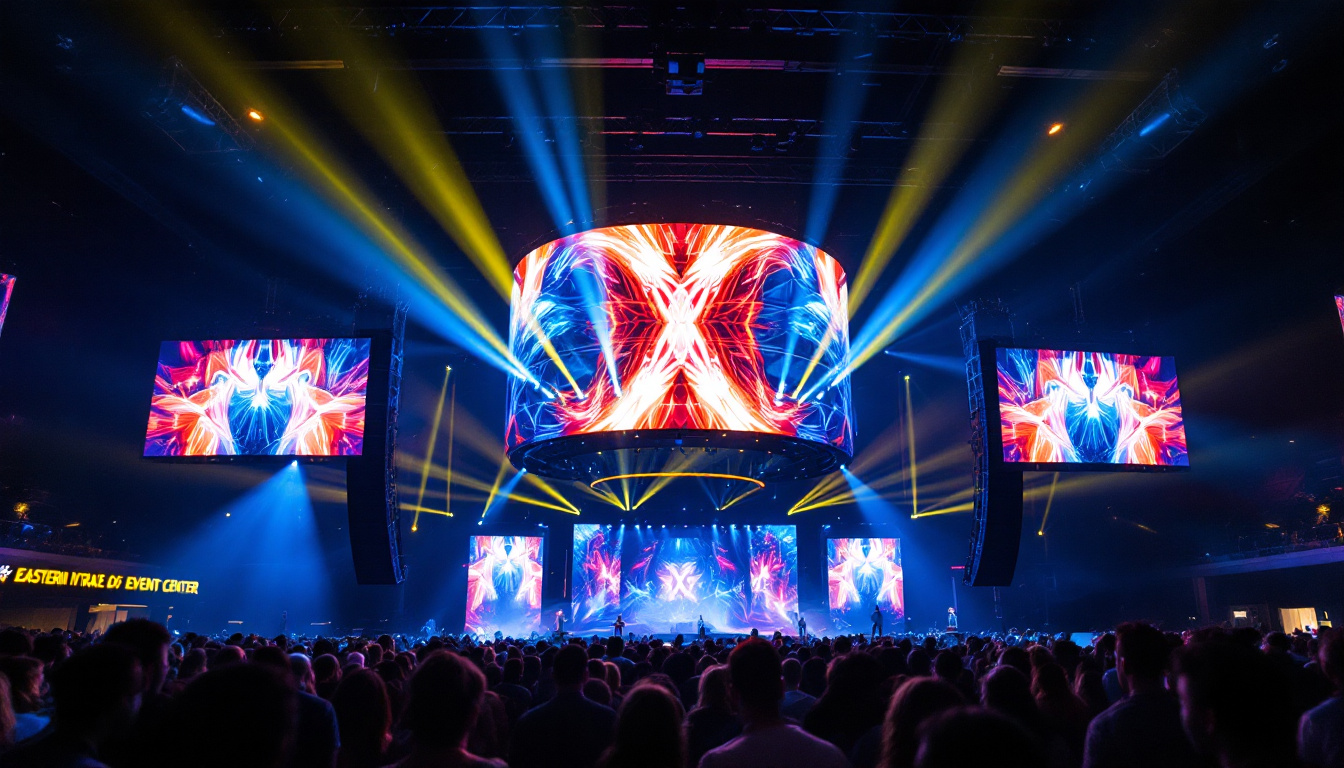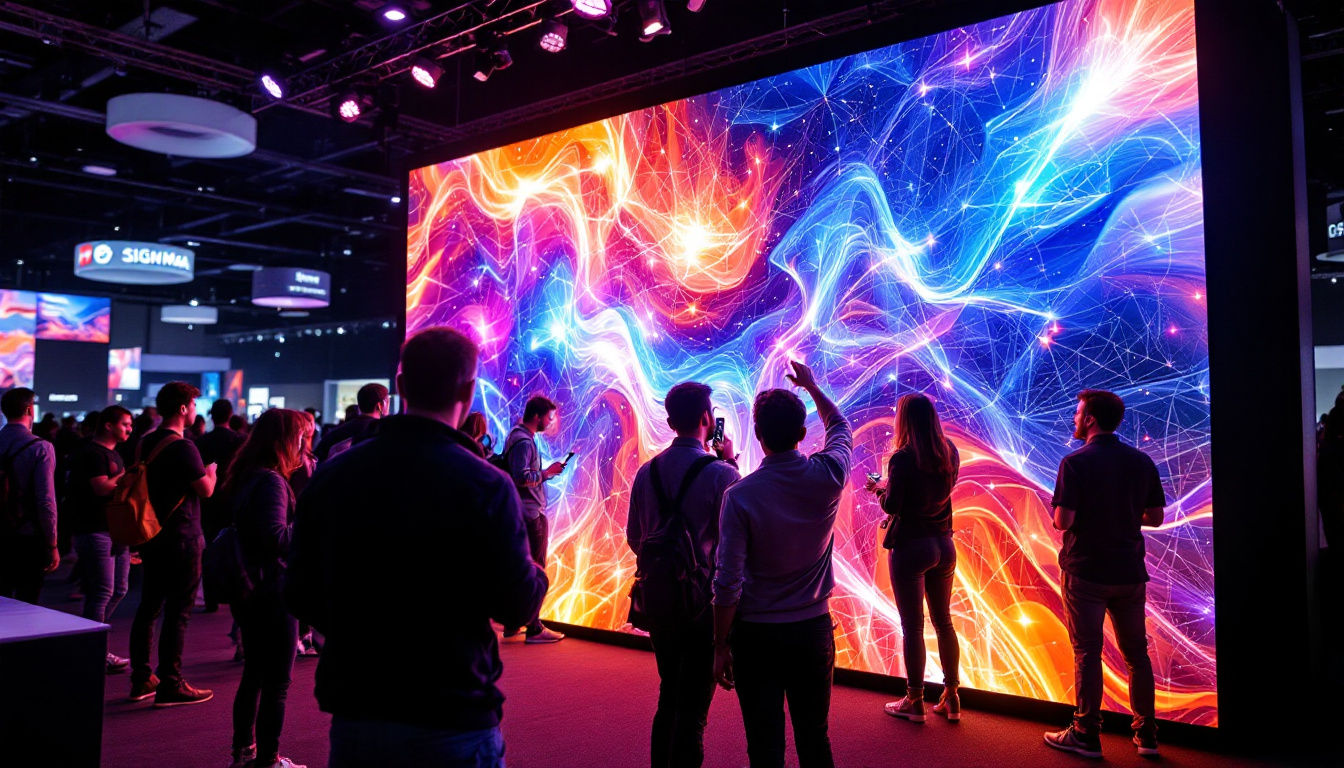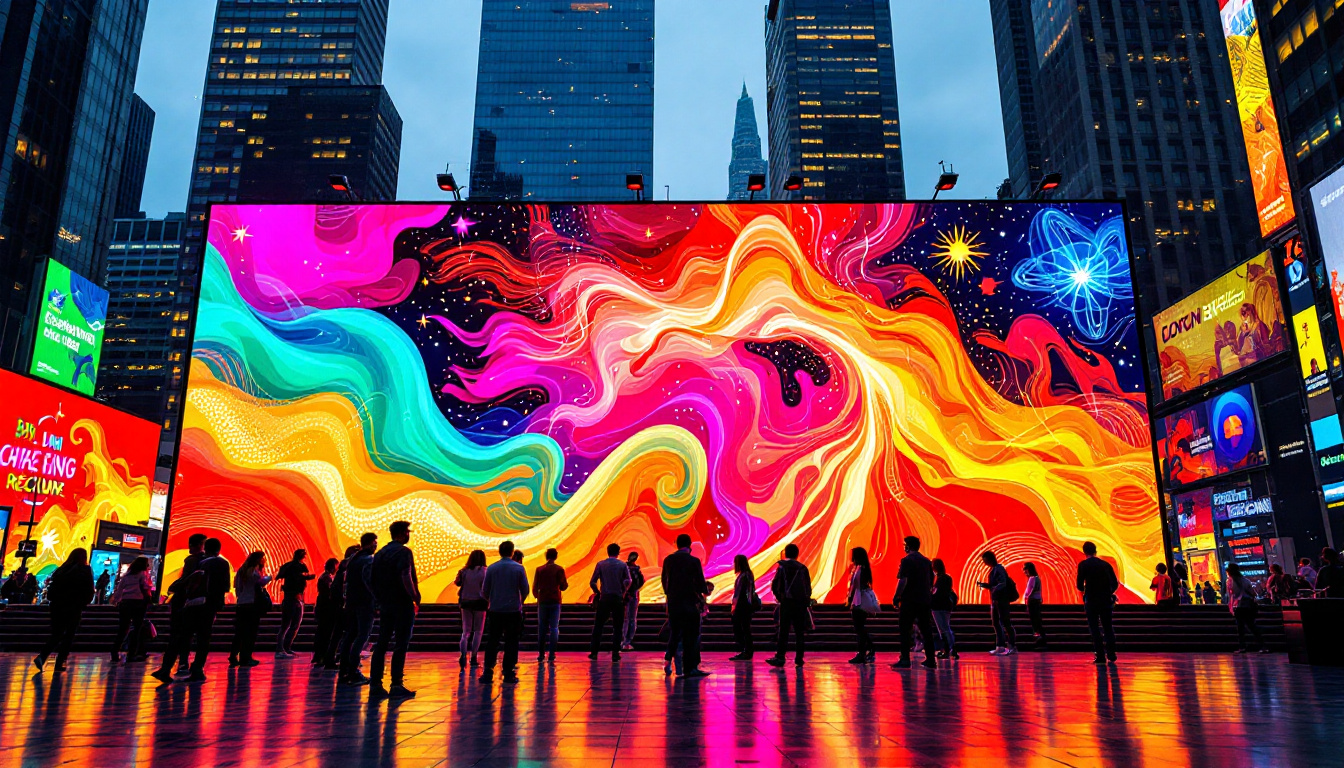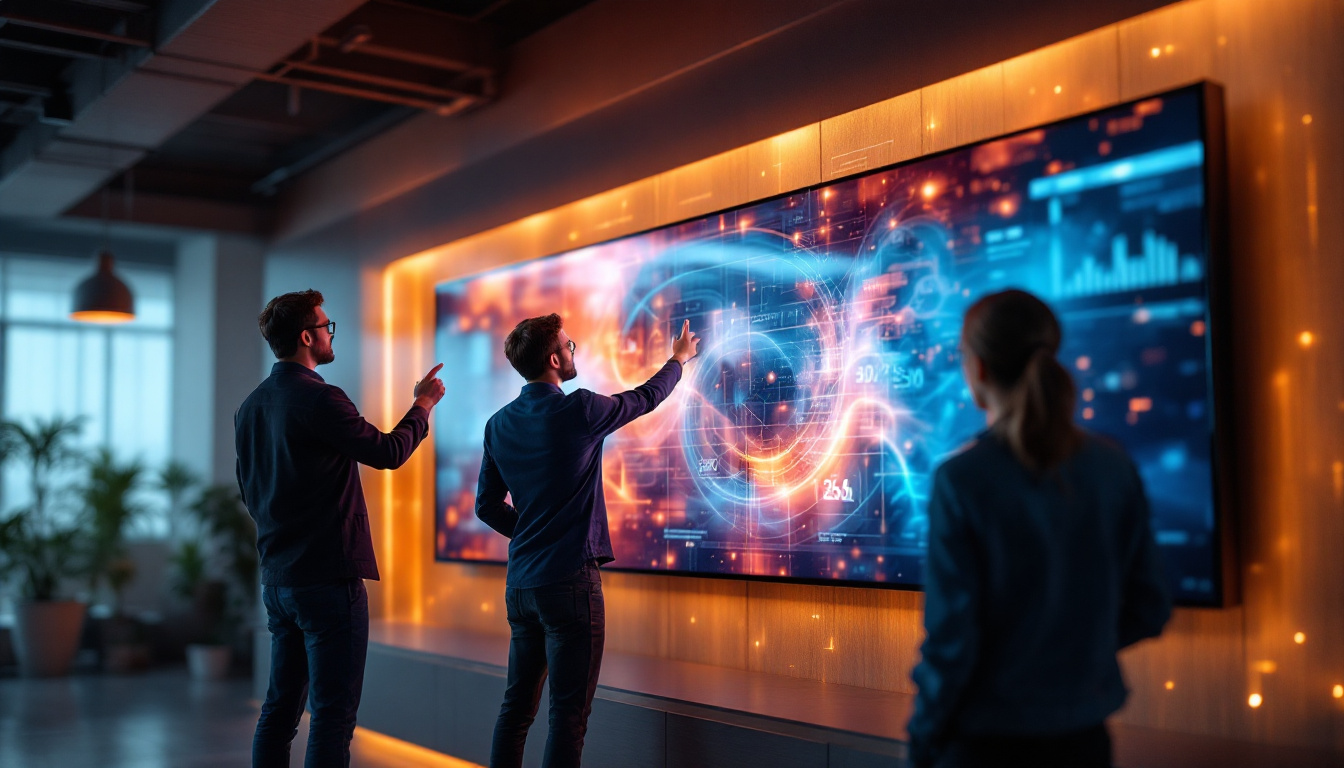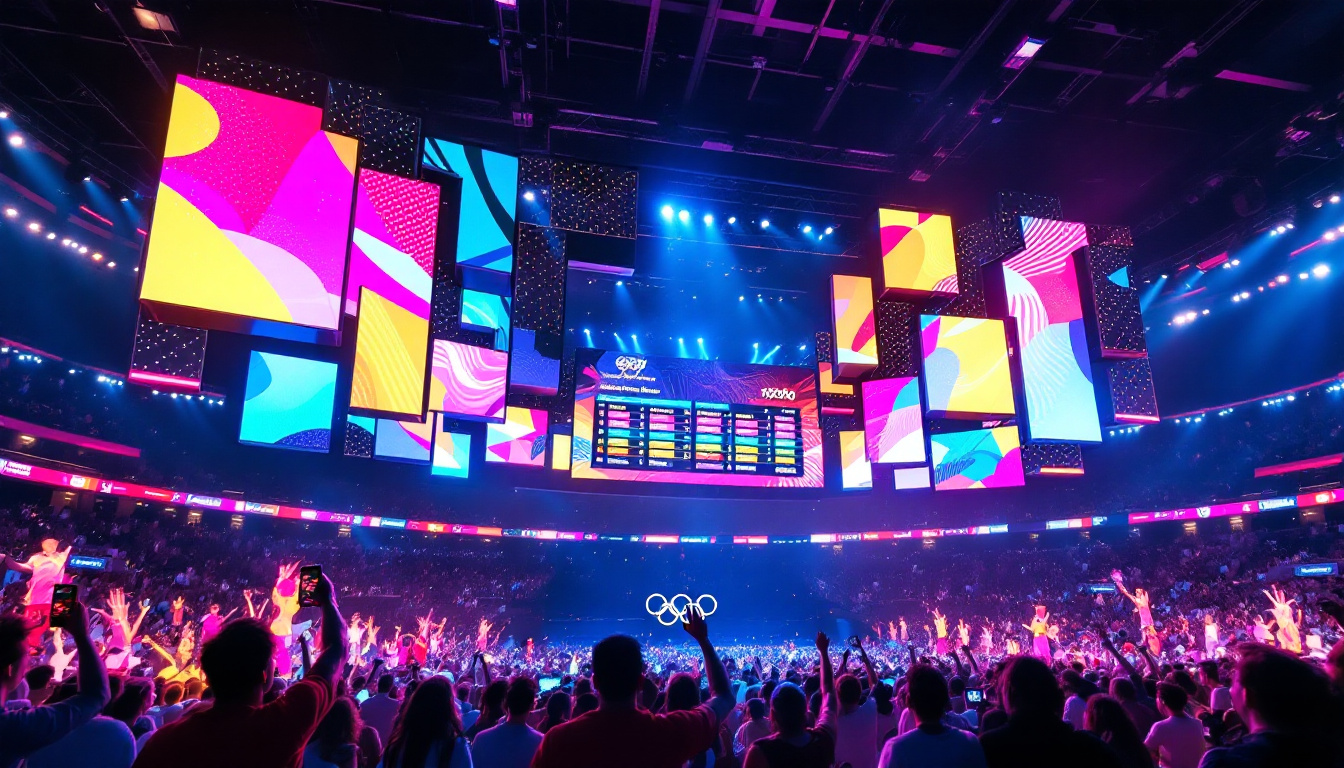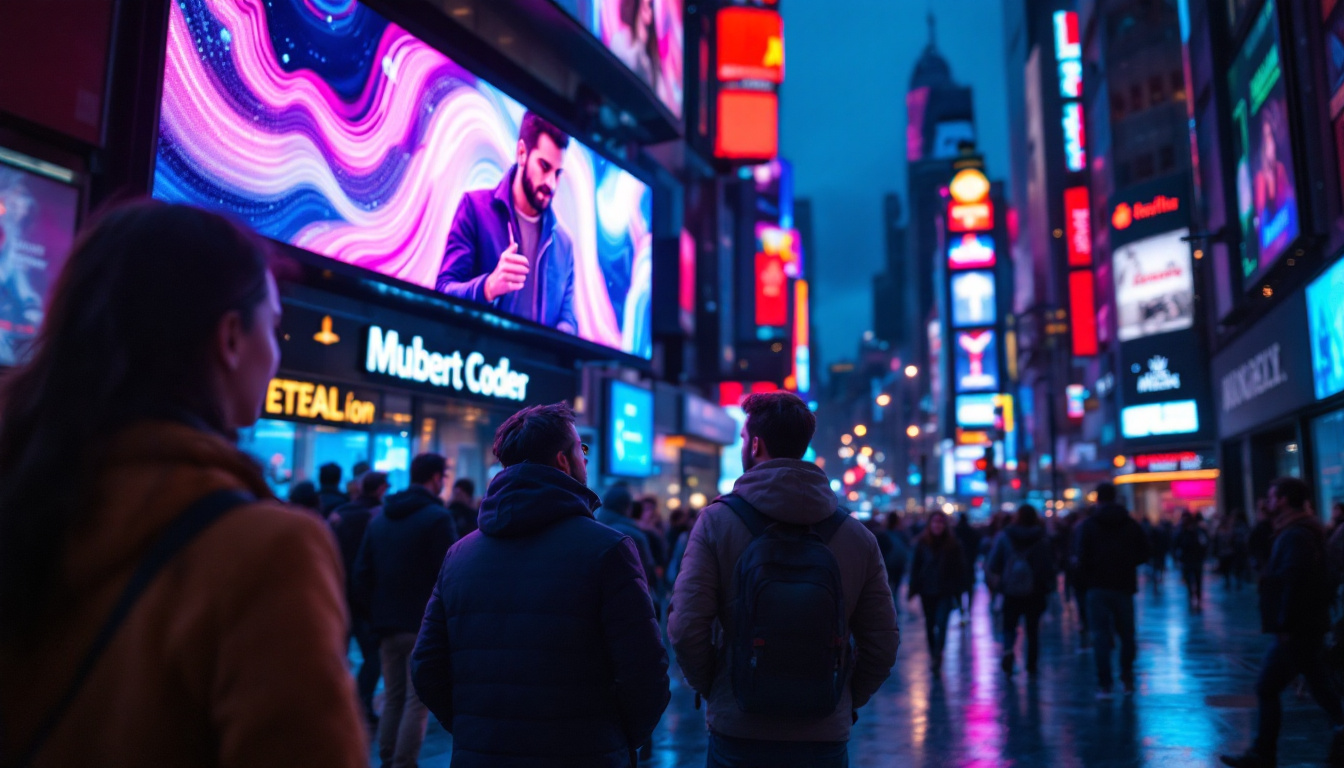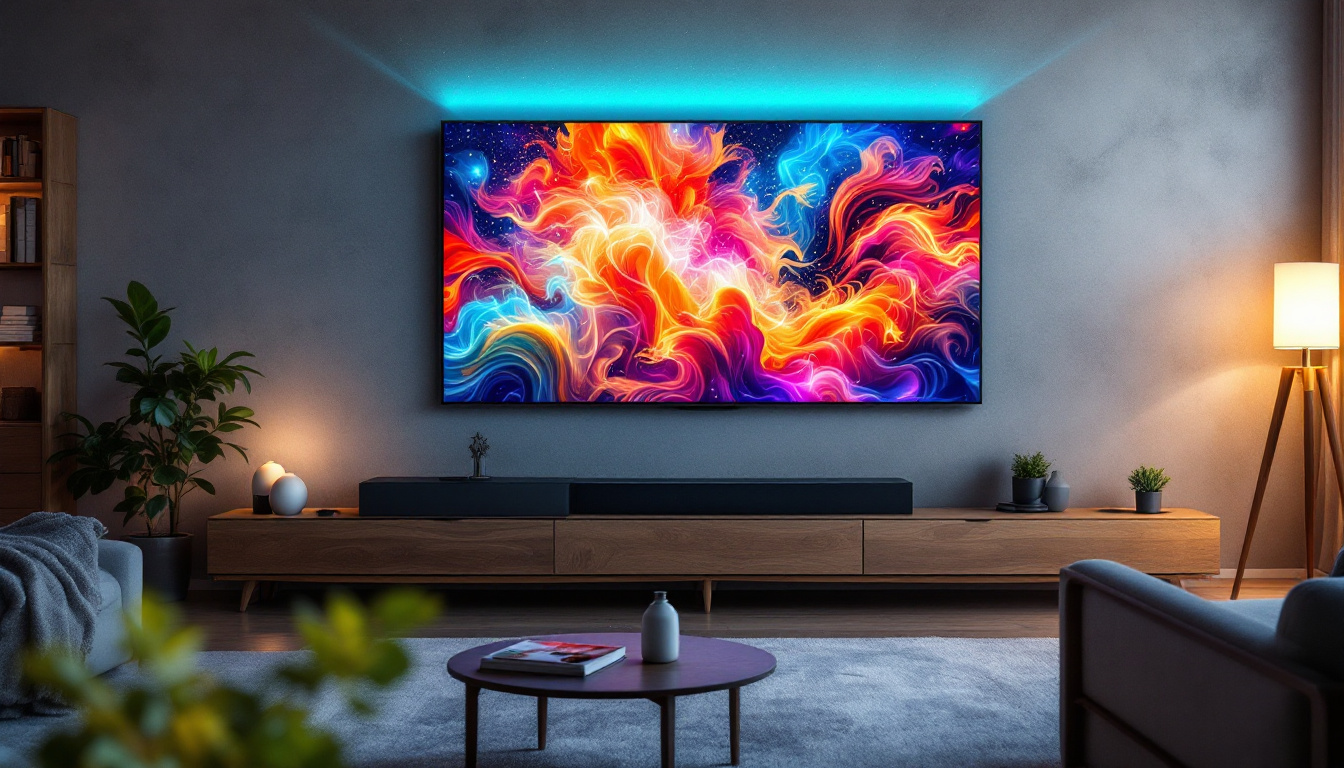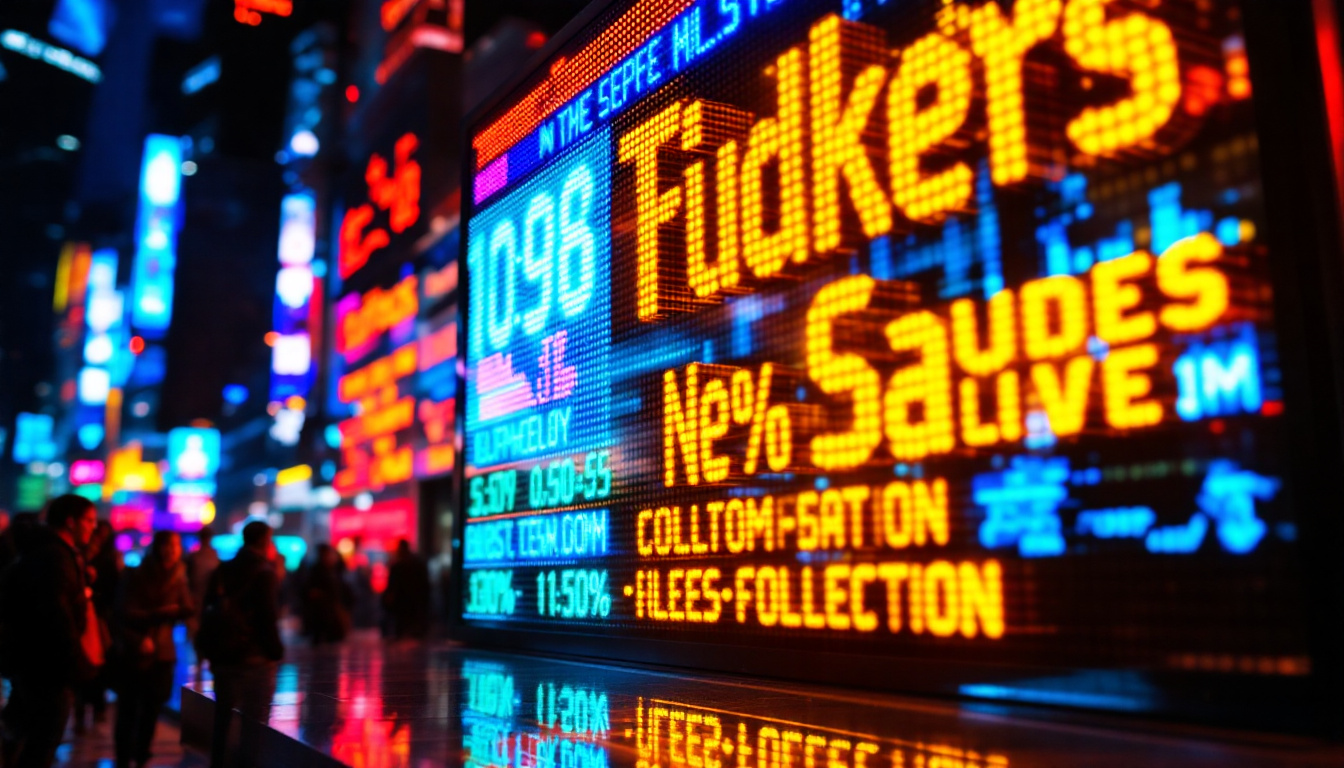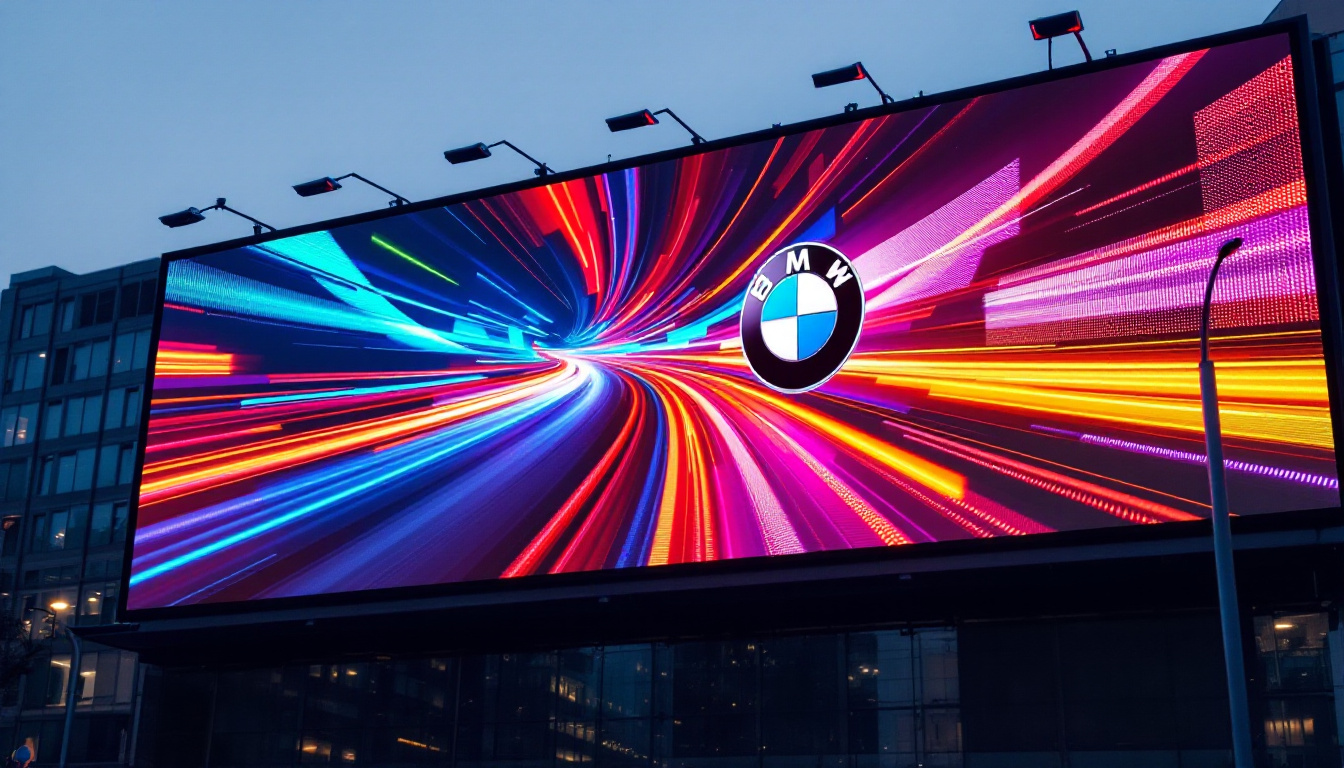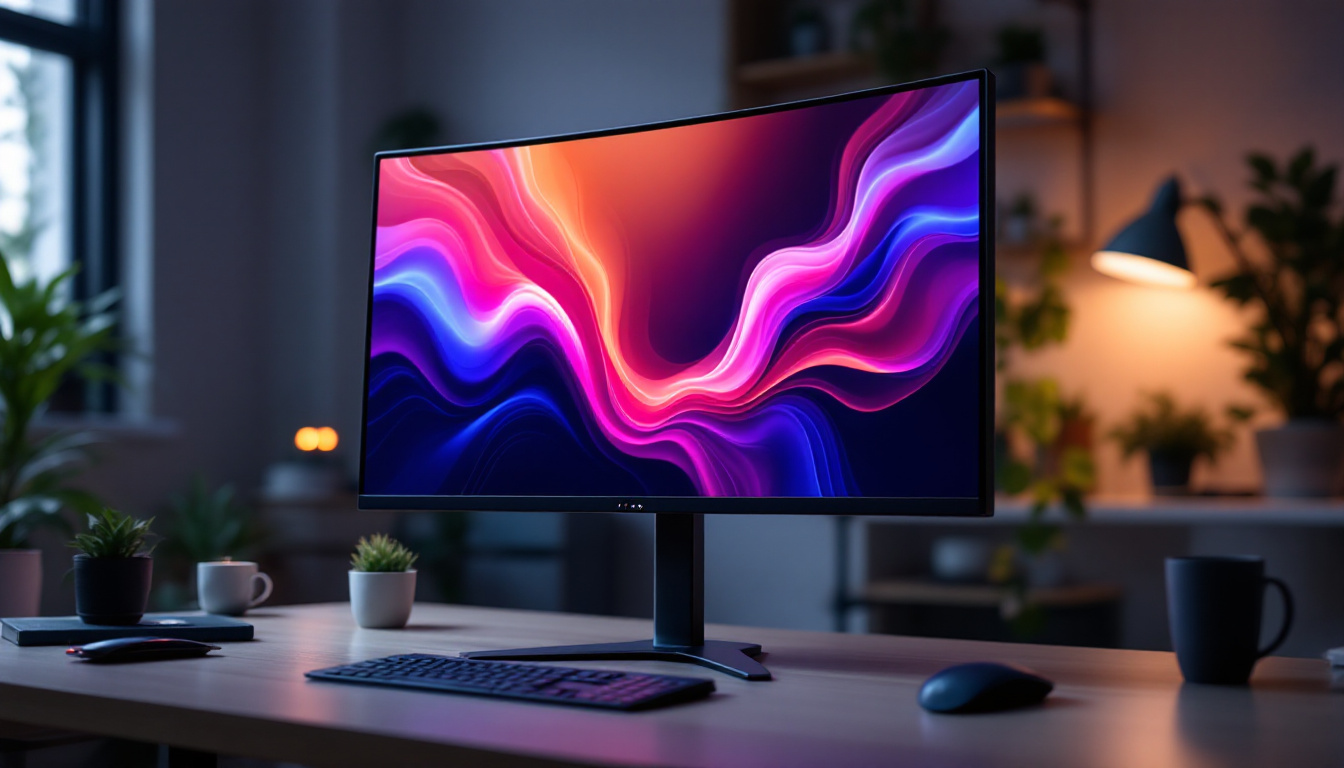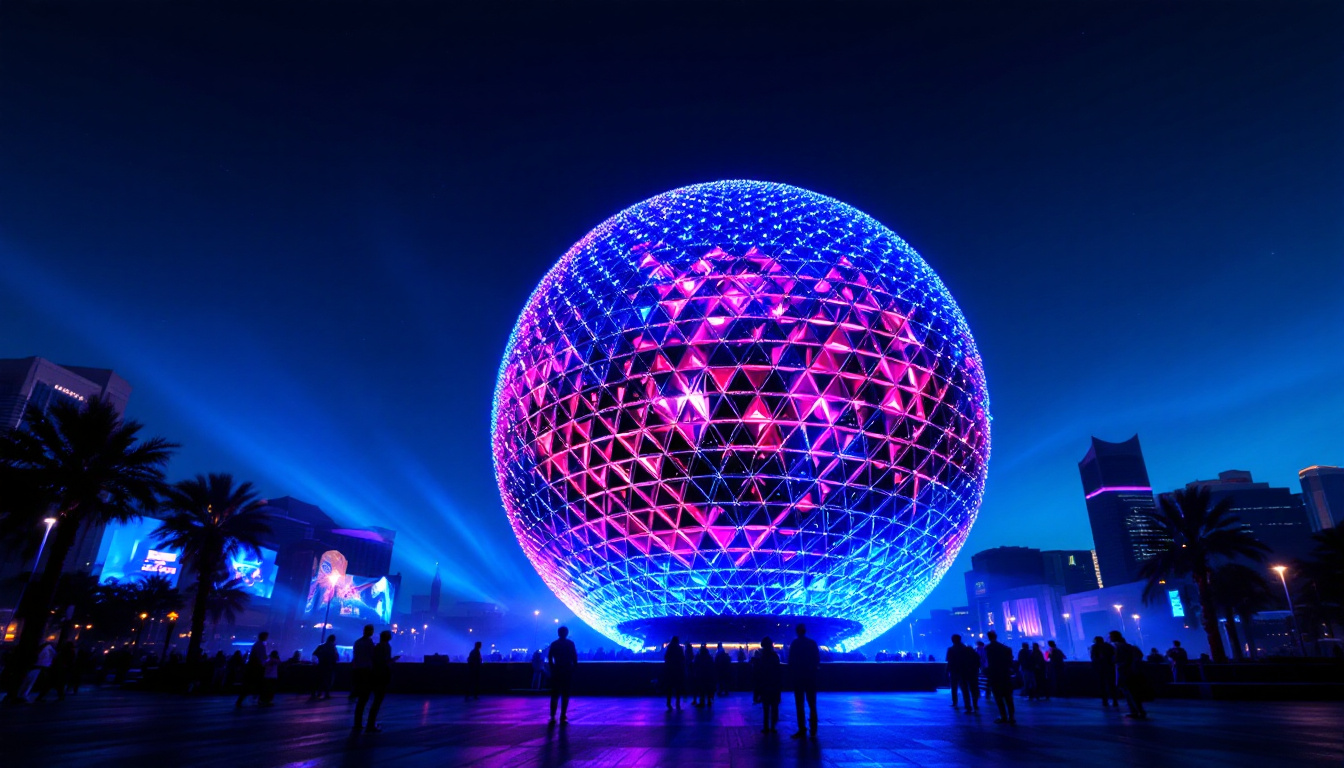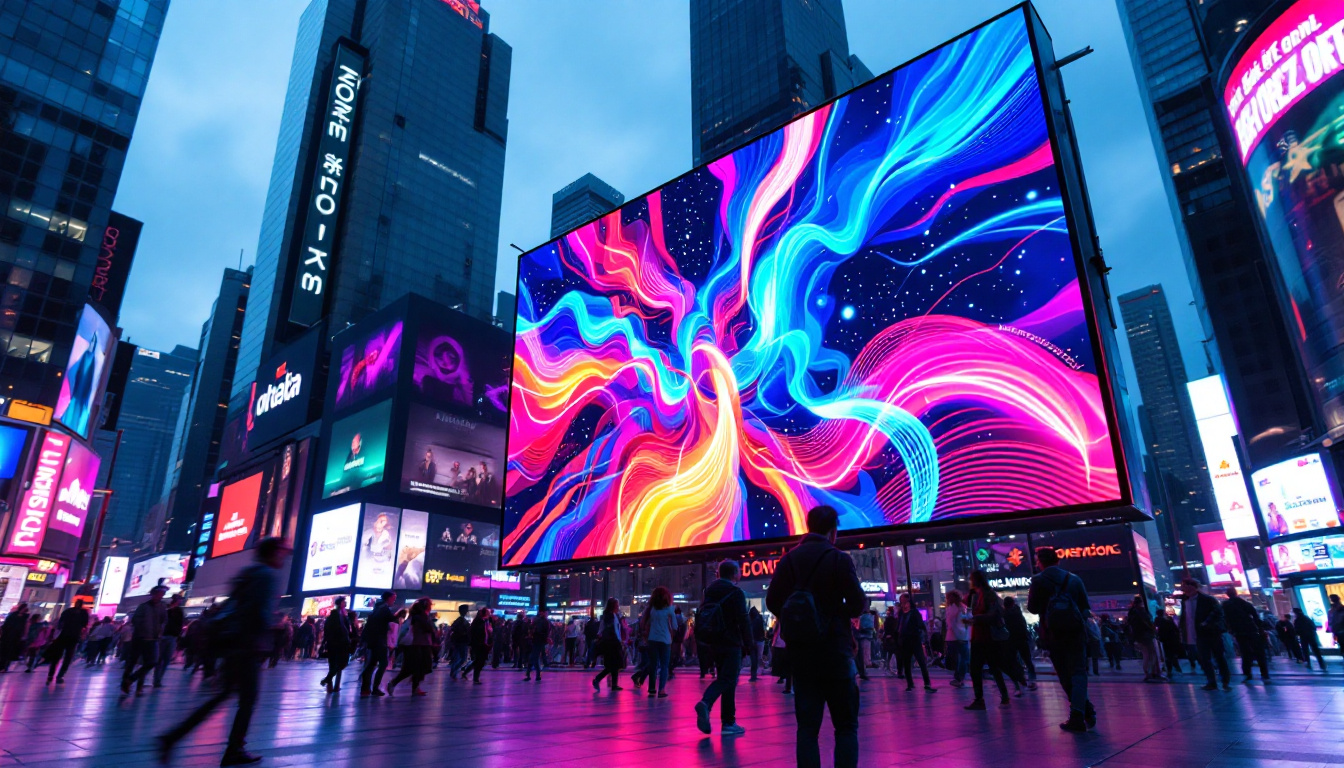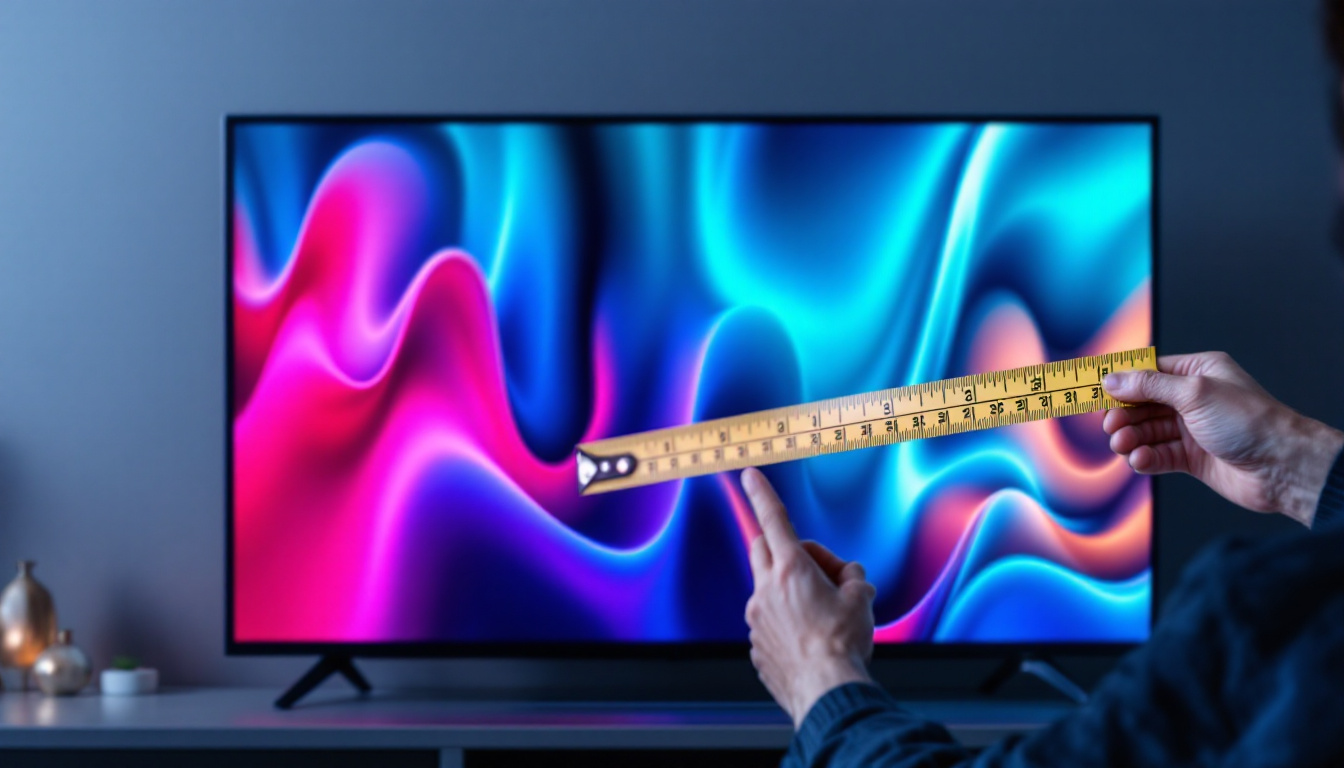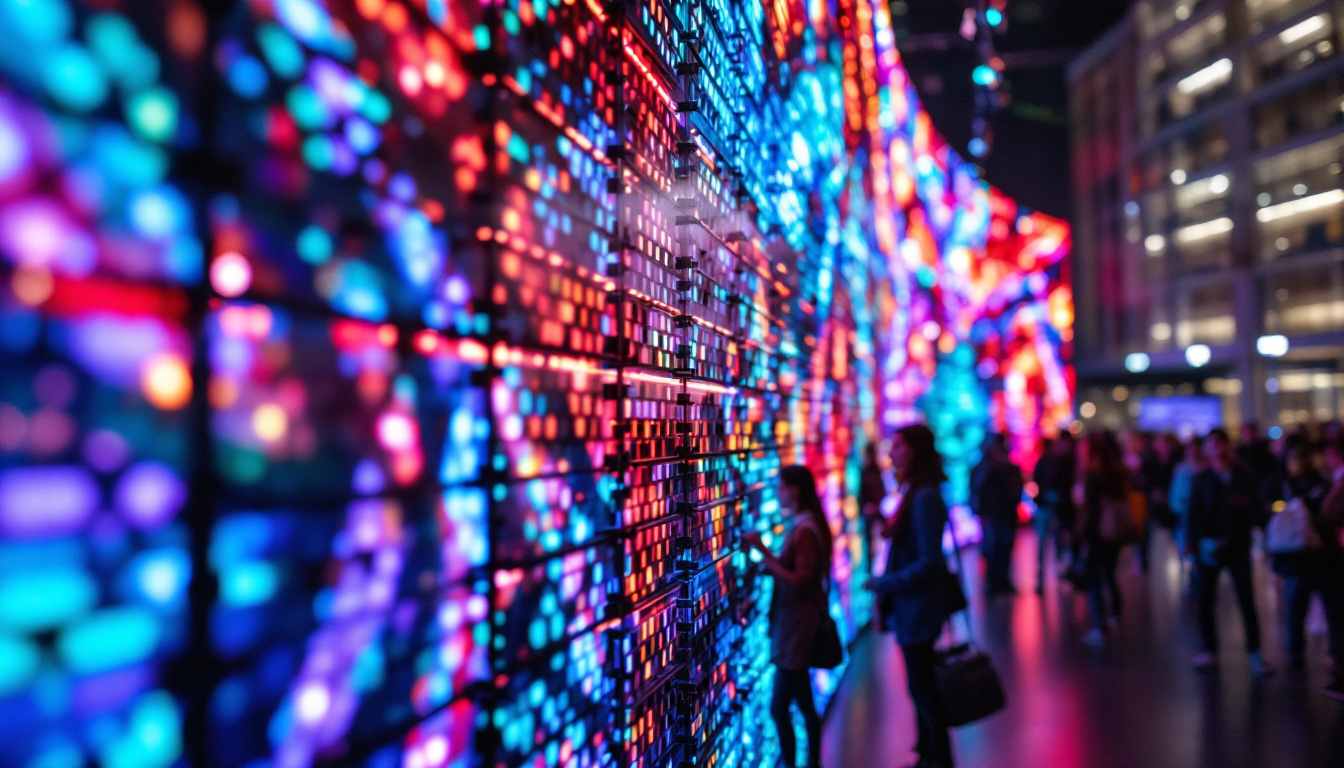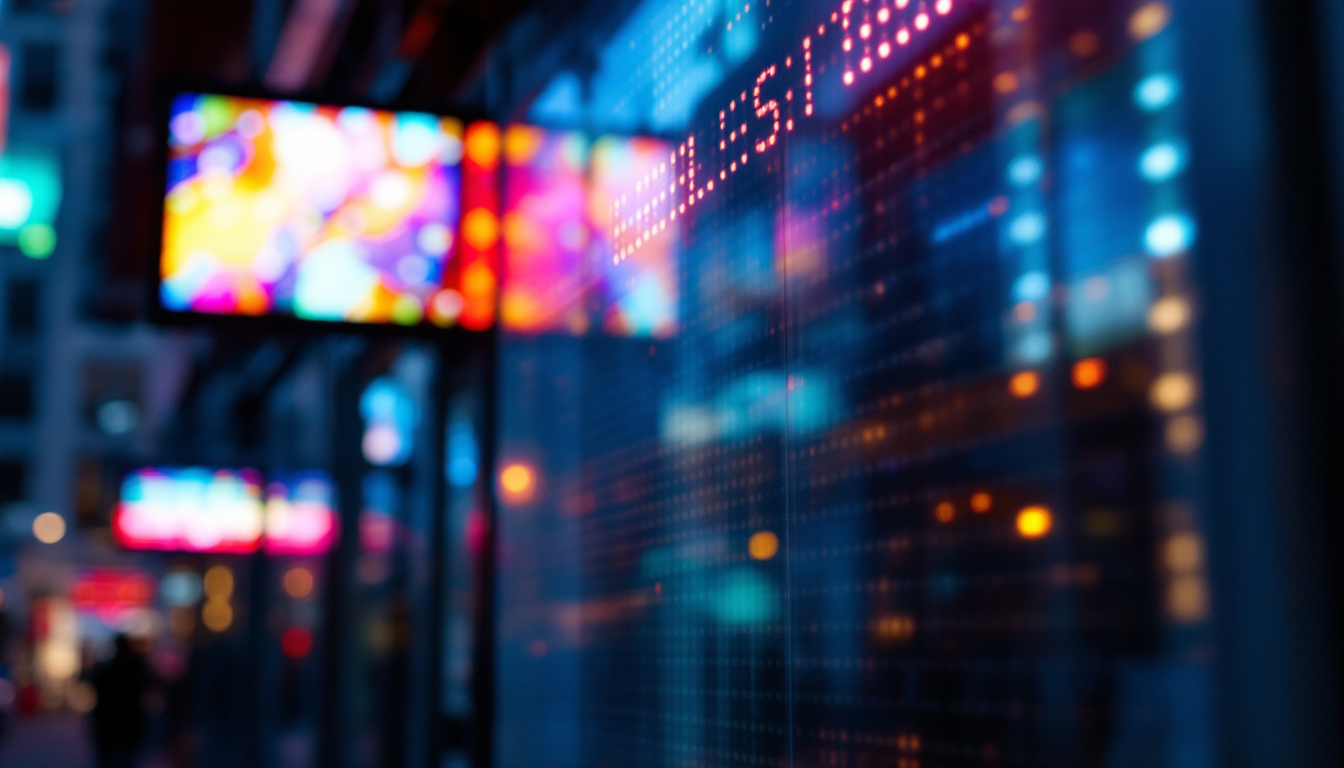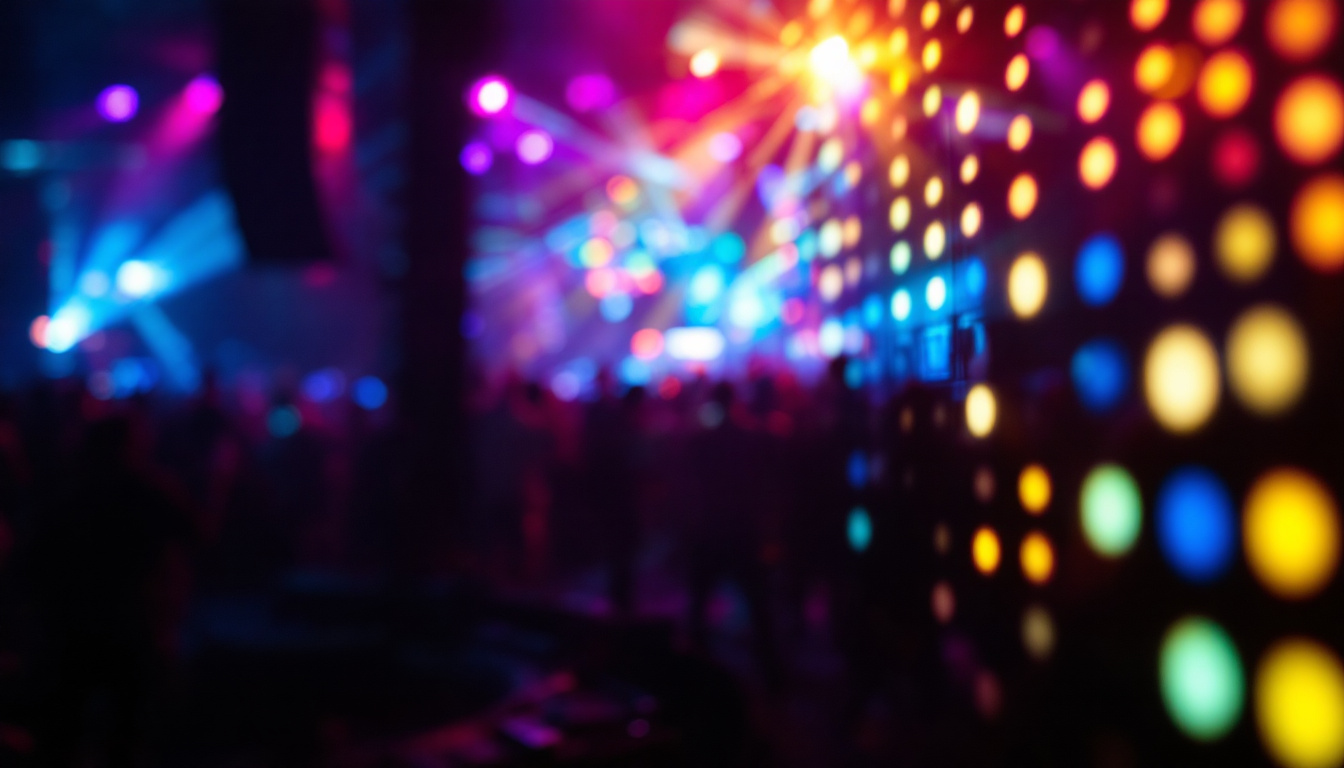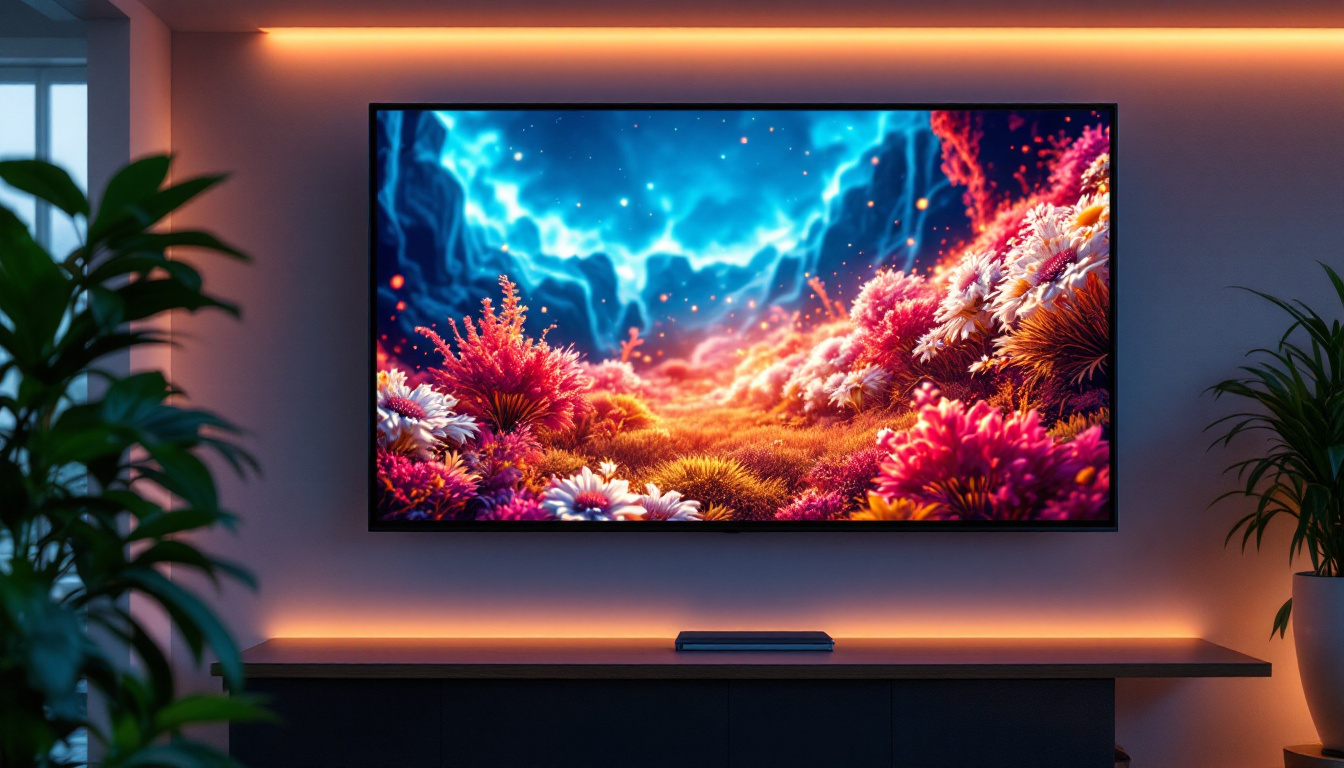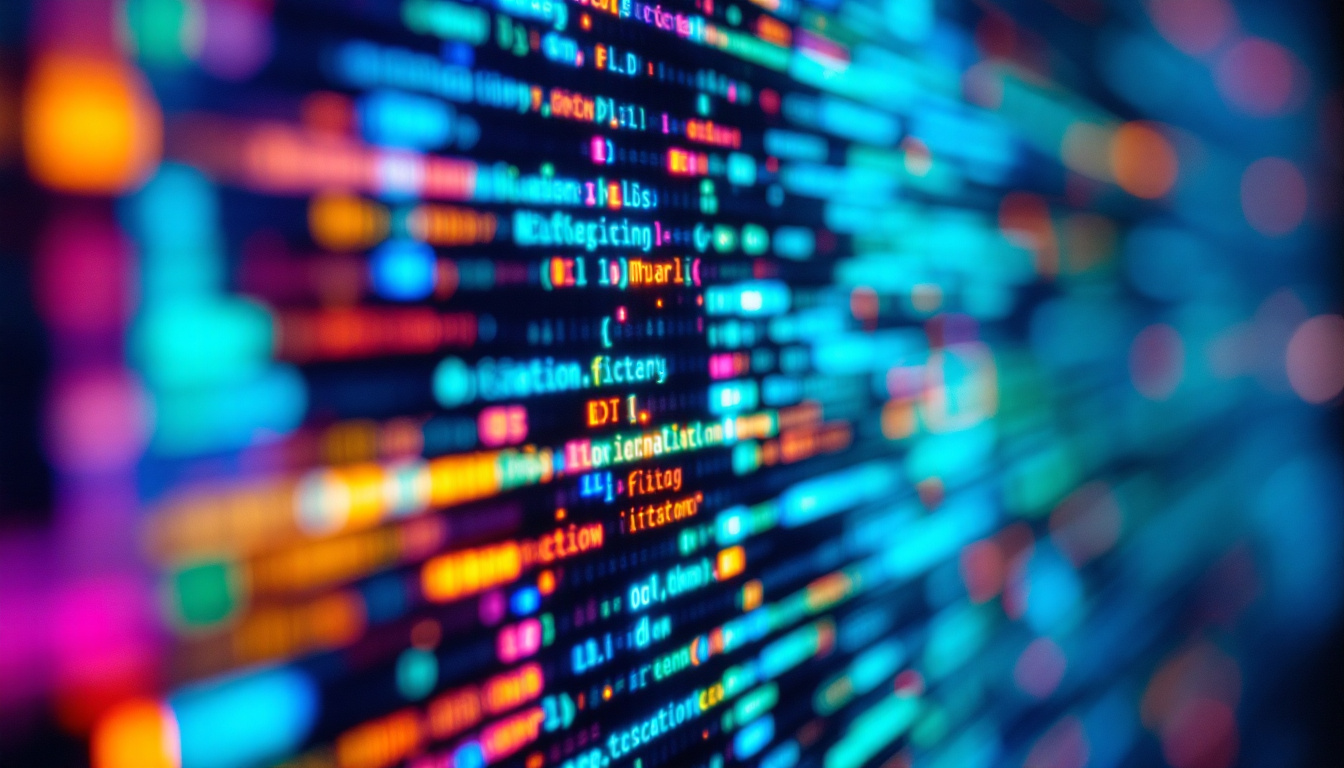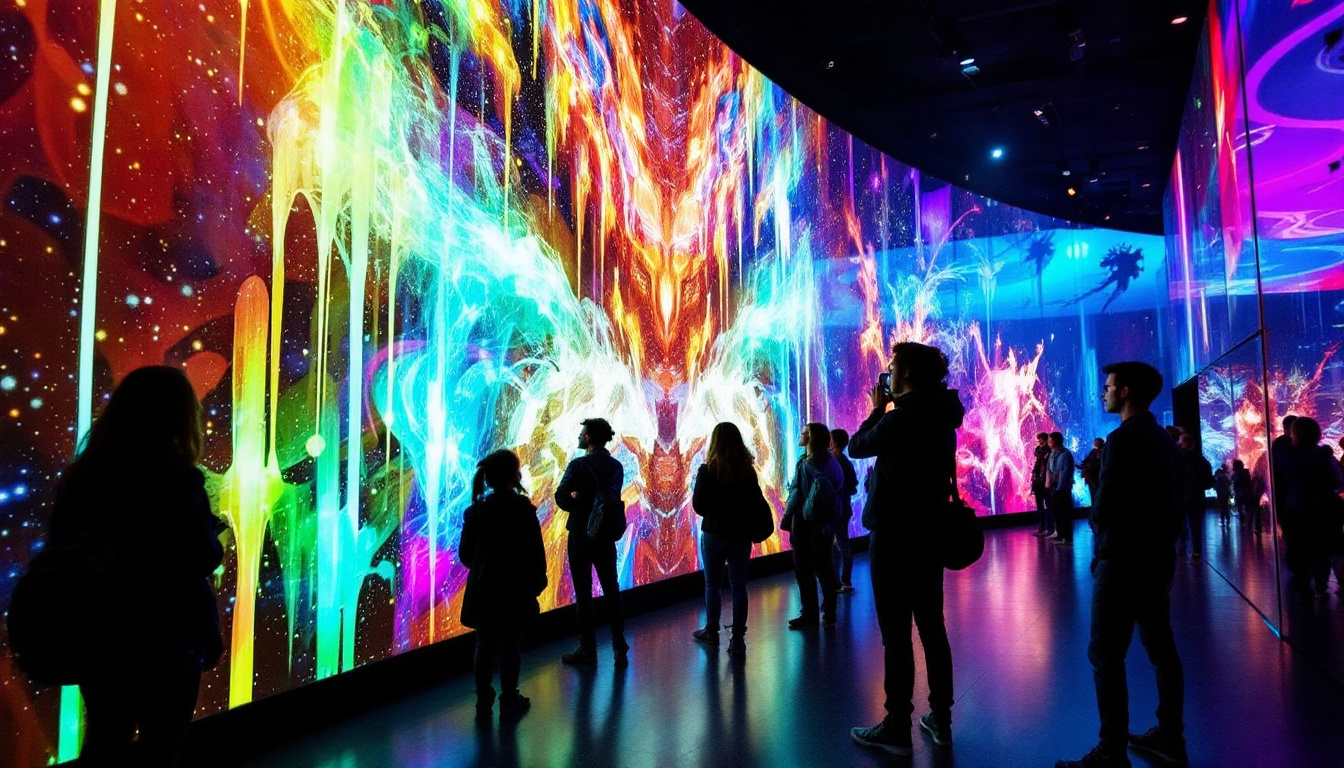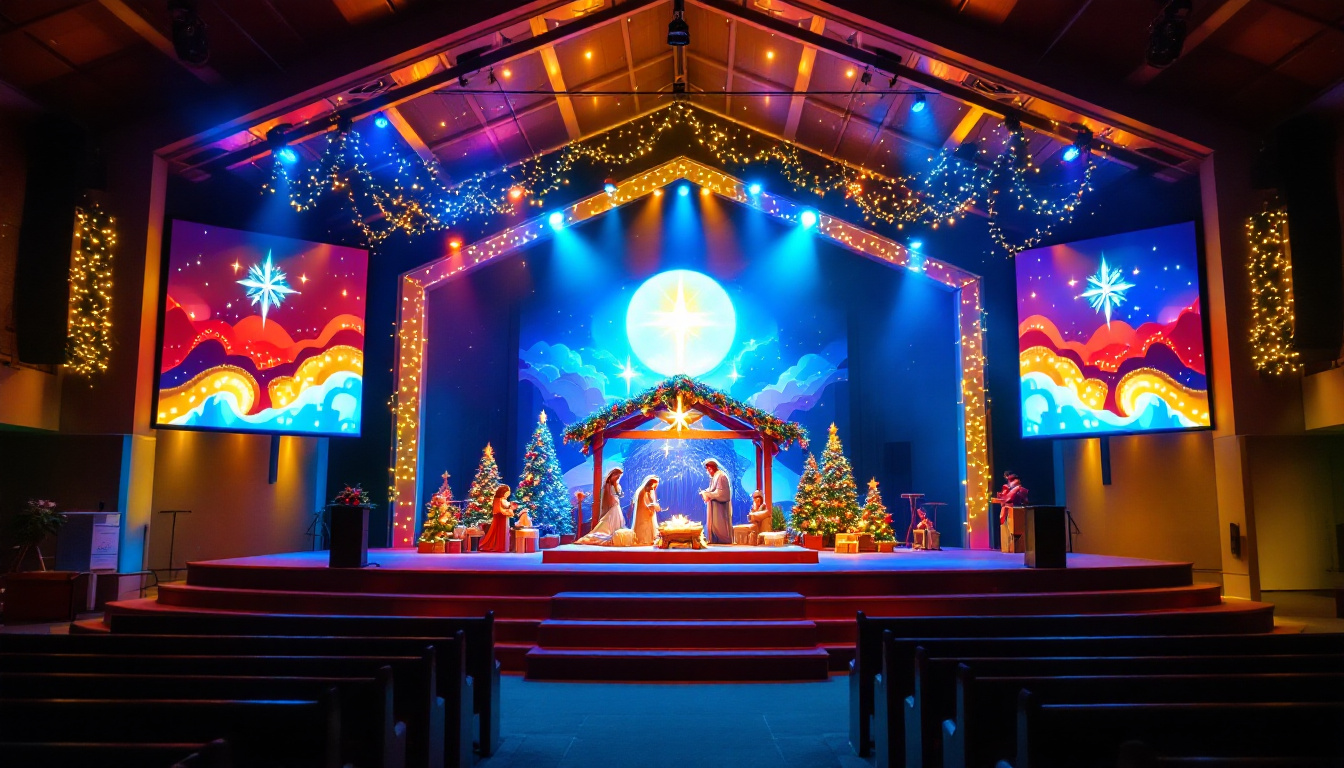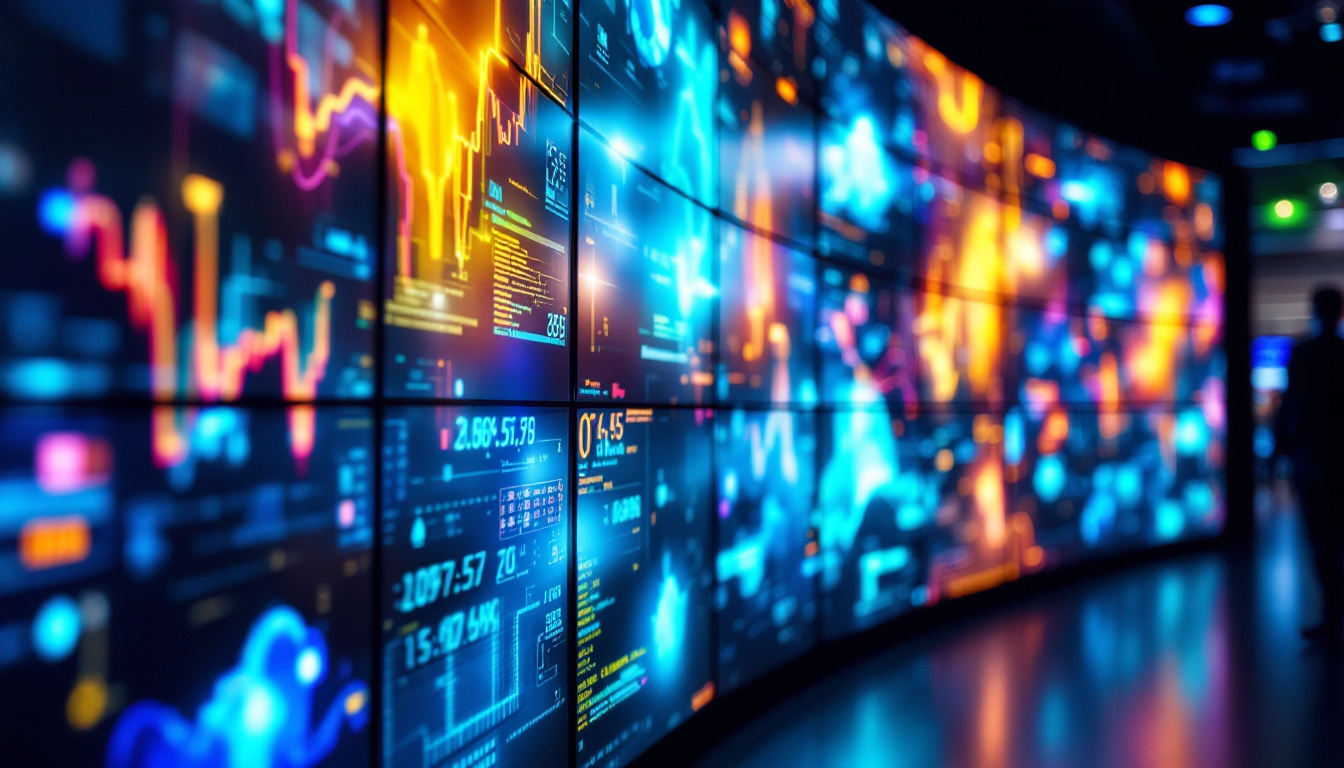In the ever-evolving world of technology, LED displays have emerged as a dominant force in visual communication. These screens, known for their vibrant colors and energy efficiency, are now ubiquitous in various applications, from advertising billboards to televisions. This article delves into the intricacies of LED displays, exploring their technology, applications, and benefits.
Understanding LED Technology
LED, or Light Emitting Diode, technology is at the heart of modern display systems. Unlike traditional display technologies that rely on liquid crystals or cathode ray tubes, LED displays utilize semiconductor materials to produce light. This fundamental difference contributes to their superior performance and versatility. The energy efficiency of LED technology is another significant advantage, as it consumes less power compared to older technologies, leading to lower electricity bills and a reduced environmental impact.
How LED Displays Work
At a basic level, an LED display consists of an array of tiny light-emitting diodes. Each diode emits light when an electric current passes through it. The combination of red, green, and blue (RGB) LEDs allows for a wide spectrum of colors, enabling the display to produce vibrant images and videos. By varying the intensity of each color, these displays can create millions of different shades. This capability not only enhances the visual experience but also allows for dynamic content that can be tailored to different audiences and environments.
The arrangement of these diodes can vary, leading to different types of LED displays. For instance, in a full-color LED display, RGB diodes are grouped together in pixels, while monochrome displays use a single color. This flexibility makes LED technology suitable for a range of applications, from simple text displays to complex video screens. Moreover, advancements in technology have led to the development of flexible LED displays, which can be curved or shaped to fit unique spaces, further expanding their usability in innovative design projects.
Types of LED Displays
LED displays can be categorized into several types, each designed for specific uses. The most common types include:
- Direct View LED Displays: These displays are commonly used in outdoor advertising and large venues. They consist of a matrix of LEDs that can be viewed from a distance. Their high brightness levels ensure visibility even in direct sunlight, making them ideal for billboards and stadiums.
- LED-backlit LCD Displays: These screens combine traditional LCD technology with LED backlighting, enhancing brightness and color accuracy. This hybrid approach allows for thinner screens and improved energy efficiency, making them a popular choice for televisions and computer monitors.
- Organic LED (OLED) Displays: Utilizing organic compounds, OLED displays offer superior contrast and color depth, making them popular in high-end televisions and smartphones. The ability of OLEDs to achieve true blacks by turning off individual pixels results in stunning image quality that captivates viewers.
In addition to these common types, there are also niche applications of LED technology, such as transparent LED displays that allow for creative advertising while maintaining visibility through the screen. These displays are increasingly being integrated into retail environments, showcasing products while providing dynamic content. Furthermore, advancements in microLED technology promise even greater resolution and efficiency, paving the way for the next generation of displays that could revolutionize how we interact with visual media.
Applications of LED Displays
LED displays have found their way into numerous sectors, revolutionizing how information is conveyed and consumed. Their versatility and adaptability have made them a preferred choice across various industries.
Advertising and Marketing
One of the most prominent applications of LED displays is in advertising. Billboards and digital signage equipped with LED technology can capture the attention of passersby with bright, dynamic content. These displays can be programmed to change messages frequently, allowing businesses to promote multiple products or services simultaneously.
Moreover, the energy efficiency of LED displays translates to reduced operational costs for advertisers. The ability to display high-quality visuals in various lighting conditions further enhances their effectiveness in marketing campaigns.
Entertainment and Events
In the entertainment industry, LED displays play a crucial role in concerts, sports events, and festivals. Large-scale LED screens are often used to broadcast live performances, ensuring that audiences can enjoy the show from any angle. Their high brightness and contrast levels make them ideal for outdoor events, where ambient light can be a challenge.
Additionally, LED technology has transformed stage design. Flexible and modular LED panels allow for creative installations that enhance the visual experience, making performances more immersive and engaging.
Public Information and Transportation
LED displays are increasingly used in public transportation systems for real-time information dissemination. Buses, trains, and airports utilize LED screens to display arrival and departure times, gate information, and other essential updates. This instant communication improves passenger experience and operational efficiency.
Moreover, municipalities are adopting LED technology for public information displays, providing citizens with updates on events, emergencies, and community services. The clarity and visibility of LED screens ensure that important messages reach a wide audience.
Benefits of LED Displays
The advantages of LED displays extend beyond their visual appeal. Their unique characteristics offer numerous benefits that make them a preferred choice for various applications.
Energy Efficiency
One of the standout features of LED displays is their energy efficiency. Compared to traditional display technologies, LEDs consume significantly less power, leading to lower electricity bills and a reduced carbon footprint. This energy efficiency is particularly beneficial for large-scale installations, where operational costs can accumulate over time.
Furthermore, many LED displays are designed with advanced power management systems that optimize energy consumption, ensuring that they only use the necessary amount of power based on the content being displayed.
Longevity and Durability
LED displays are known for their impressive lifespan, often lasting tens of thousands of hours. This longevity translates to lower maintenance costs and reduced frequency of replacements. The solid-state construction of LEDs makes them more resistant to shocks and vibrations, making them suitable for both indoor and outdoor environments.
Additionally, many LED displays are designed to withstand harsh weather conditions, ensuring that they can operate effectively in various climates, from scorching heat to freezing temperatures.
High-Quality Visuals
LED displays are renowned for their exceptional picture quality. With high brightness levels, vibrant colors, and excellent contrast ratios, they deliver stunning visuals that capture attention. The ability to display high-definition content makes them ideal for applications requiring clarity and detail, such as video walls and digital signage.
Moreover, advancements in LED technology, such as HDR (High Dynamic Range), have further enhanced the visual experience, allowing for deeper blacks and brighter highlights. This capability is particularly valuable in entertainment and media applications, where image quality is paramount.
Challenges and Considerations
While LED displays offer numerous benefits, there are also challenges and considerations that potential users should be aware of. Understanding these factors can help in making informed decisions when investing in LED technology.
Initial Costs
The initial investment for LED displays can be higher compared to traditional display technologies. The cost of purchasing and installing LED screens may deter some businesses or organizations from making the switch. However, it is essential to consider the long-term savings associated with energy efficiency and durability.
Many users find that the return on investment (ROI) justifies the upfront costs, especially when factoring in lower maintenance expenses and reduced energy bills over time.
Viewing Angles and Distance
Another consideration is the viewing angle and distance. While LED displays offer excellent visibility, the optimal viewing experience can vary based on the type of display and its pixel pitch. Displays with a finer pixel pitch are ideal for close viewing, while those with a coarser pitch are better suited for larger distances.
Understanding the intended use and audience distance is crucial in selecting the right LED display. This ensures that the visuals are clear and impactful, regardless of where viewers are positioned.
Heat Management
LED displays generate heat during operation, which can impact performance and longevity if not managed properly. Adequate cooling systems are essential, particularly for large installations or displays used in high-temperature environments. Failure to address heat management can lead to reduced lifespan and potential malfunctions.
Investing in quality LED displays that come with built-in thermal management solutions can mitigate these risks, ensuring optimal performance over time.
Future of LED Displays
The future of LED displays looks promising, with continuous advancements in technology and design. Emerging trends are set to redefine how these displays are utilized across various sectors.
Integration with Smart Technology
As the world becomes increasingly interconnected, the integration of LED displays with smart technology is on the rise. Smart displays equipped with sensors and connectivity features can adapt content based on environmental conditions, audience engagement, and real-time data.
This capability allows for more personalized and dynamic content delivery, enhancing the overall user experience. For instance, digital signage can change advertisements based on foot traffic patterns or weather conditions, maximizing effectiveness.
Advancements in Resolution and Color Accuracy
Future developments in LED technology are expected to yield even higher resolutions and improved color accuracy. Innovations such as MicroLED technology promise to deliver pixel-perfect images with enhanced brightness and contrast, further blurring the lines between LED displays and traditional display technologies.
These advancements will open new possibilities for applications in entertainment, advertising, and beyond, making LED displays even more appealing to users.
Sustainability Initiatives
With growing awareness of environmental issues, sustainability is becoming a focal point in the development of LED displays. Manufacturers are increasingly prioritizing eco-friendly materials and production processes, aiming to reduce the environmental impact of their products.
As consumers become more environmentally conscious, the demand for sustainable LED displays is likely to rise, prompting manufacturers to innovate and adapt to these changing preferences.
Conclusion
LED displays represent a significant advancement in visual technology, offering a range of benefits that make them a preferred choice for various applications. From vibrant advertising to immersive entertainment experiences, their versatility is unmatched. While challenges exist, the continuous evolution of LED technology promises to address these issues, paving the way for even more innovative uses in the future.
As industries continue to embrace digital transformation, LED displays will undoubtedly play a crucial role in shaping how information is communicated and experienced. Investing in LED technology today not only enhances visual communication but also positions businesses and organizations for success in an increasingly digital world.
Discover LumenMatrix LED Display Solutions
Embrace the future of visual technology with LumenMatrix, a pioneer in crafting exceptional LED display modules that bring your brand to life. Whether you’re looking to captivate with an Indoor LED Wall Display, make a statement with an Outdoor LED Wall Display, or innovate with Custom LED Display solutions, LumenMatrix has you covered. Our mission is to transform your visual communication, offering a spectrum of LED displays including Vehicle, Poster, Sports, Floor, All-in-One, and Transparent Displays. Elevate your message and engage your audience like never before. Check out LumenMatrix LED Display Solutions today and step into a world of vivid imagery and dynamic storytelling.

